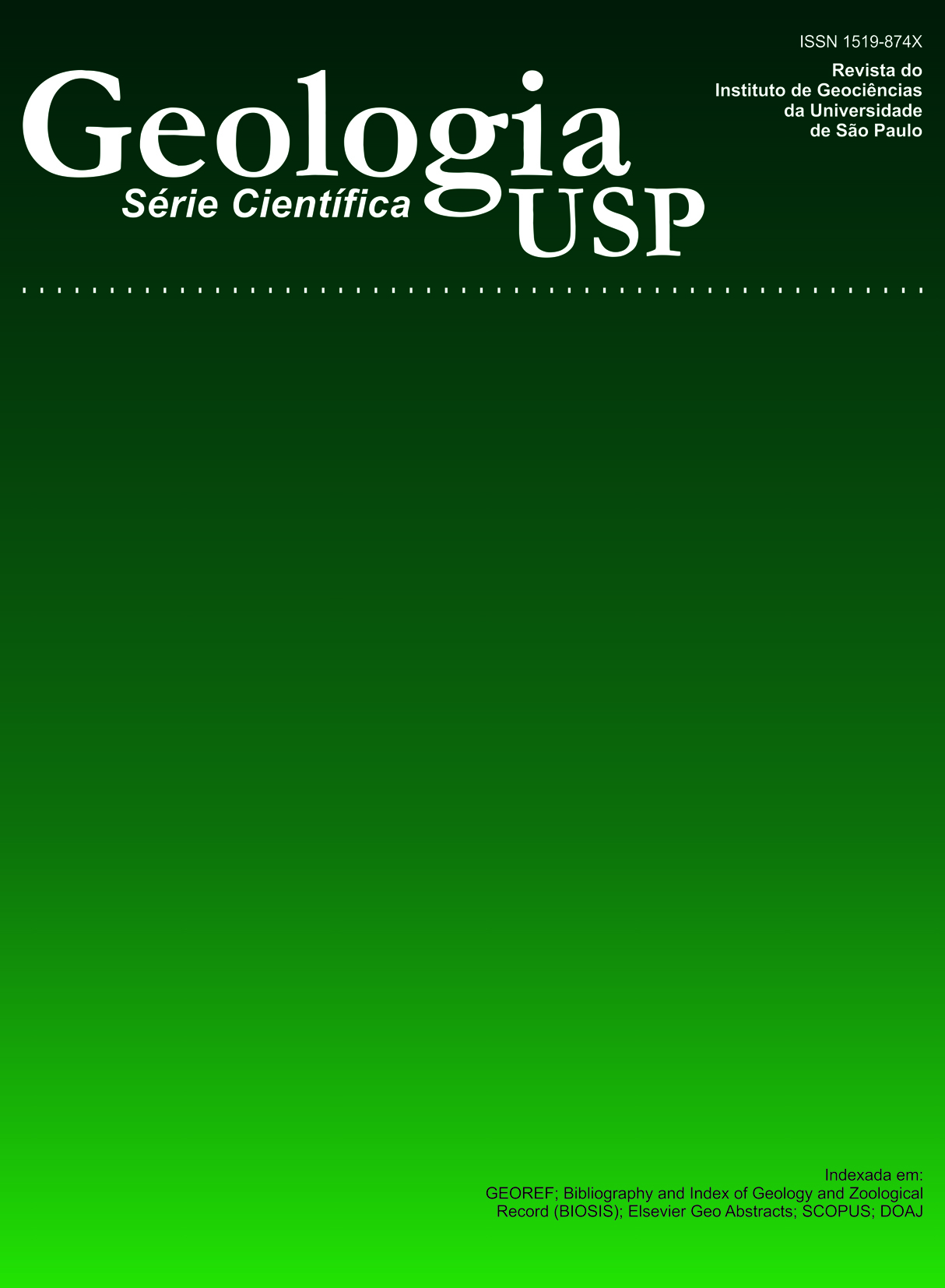Stratigraphy of the Basalt Flows of the Formação Serra Geral (Ribeirão Preto - SP) Based on Physical Geology, Petrography and Geochemistry
DOI:
https://doi.org/10.5327/Z1519-874X2010000200006Keywords:
Serra Geral Formation, Basalts, Stratigraphy, Petrography, GeochemistryAbstract
The study of the physical geology and geochemistry of the basalts of Ribeirão Preto was part of a hydrogeological research that aimed at investigating the recharge of the Guarani Aquifer System (SAG) through the basalts of the Serra Geral Aquifer (ASG), a project shortly named FRATASG. In addition to hydrogeological methods, the research demanded a detailed geological investigation, which is essential for the elaboration of conceptual models of groundwater circulation in complex aquifers, as is the case of the fractured basalts of the ASG. Thus, the study encompassed field work for the description of the macroscopic aspects and relationships among the basalts and the underlying sandstones, as well as, rock sampling and petrographic and chemical analysis. Furthermore, the use of lithologic logs of five wells drilled in FRATASG project was essential for the establishment of the subsurface basalt stratigraphy. The study concluded that, in Bonfim Paulista region, there are four basalt floods, namely B1, B2, B3 and B4. The B4 occurrence is very restricted as it was largely eroded. B1 and B2 average thicknesses are 45 and 60 m, respectively. All four basalts are of sheet-like lobe types and were probably emplaced by inflation, B1 being the one that presents more evidence in that respect. B1 presents a thick vesicular top and, as well as B2, can show more than one vesicular layer at the top. Columnar joints were observed in B2 and B3 and are more remarkable in B3, where a lower colonnade tier (B3-C) is overlain by an entablature layer (B3-E). B3 is the thickest flow (75 to 105 m) and contains irregular and roughly round patches of hydraulic breccia in B3-C or along sub-horizontal fractures that allow the circulation of fluids (groundwater at the present). The chemical composition of B3 is homogeneous and very different from B1 and B2 with regard to several oxides (Al2O3, P2O5, Fe2O3, TiO2 e MgO) and trace elements (Ni, Zn, Cu, Y). B1 is very different from B2 with regard to P2O5, TiO2, Cu, Zn, Y and Ni.Downloads
Download data is not yet available.
Downloads
Published
2010-07-01
Issue
Section
Articles
License
Authors who publish in this journal shall comply with the following terms:
- Authors keep their copyright and grant to Geologia USP: Série Científica the right of first publication, with the paper under the Creative Commons BY-NC-SA license (summary of the license: https://creativecommons.org/licenses/by-nc-sa/4.0 | full text of the license: https://creativecommons.org/licenses/by-nc-sa/4.0/legalcode) that allows the non-commercial sharing of the paper and granting the proper copyrights of the first publication in this journal.
- Authors are authorized to take additional contracts separately, for non-exclusive distribution of the version of the paper published in this journal (publish in institutional repository or as a book chapter), granting the proper copyrights of first publication in this journal.
- Authors are allowed and encouraged to publish and distribute their paper online (in institutional repositories or their personal page) at any point before or during the editorial process, since this can generate productive changes as well as increase the impact and citation of the published paper (See The effect of Open Access and downloads on citation impact).
How to Cite
Fernandes, A. J., Maldaner, C. H., Sobrinho, J. M. A., Pressinotti, M. M. N., & Wahnfried, I. (2010). Stratigraphy of the Basalt Flows of the Formação Serra Geral (Ribeirão Preto - SP) Based on Physical Geology, Petrography and Geochemistry . Geologia USP. Série Científica, 10(2), 73-99. https://doi.org/10.5327/Z1519-874X2010000200006





